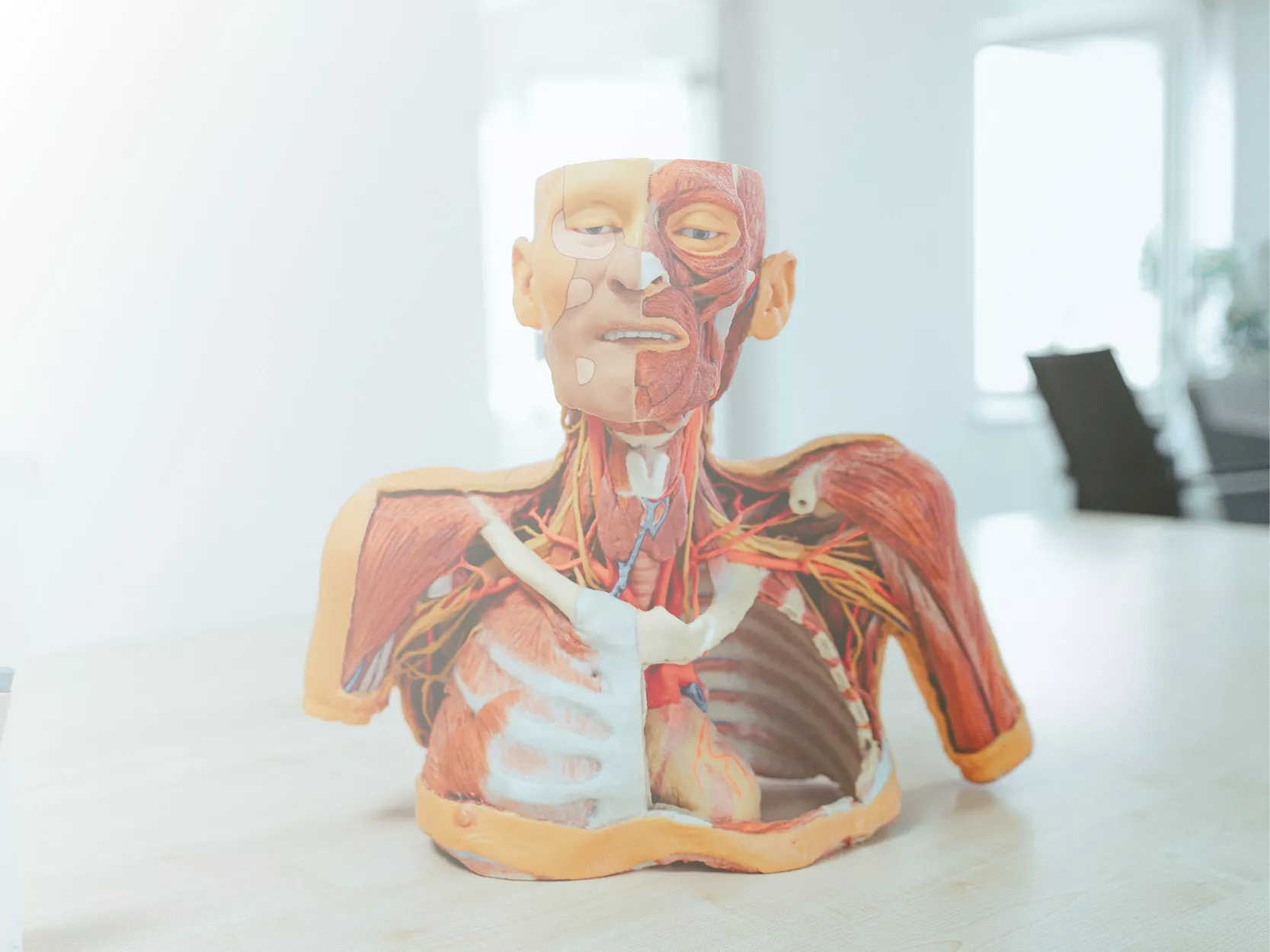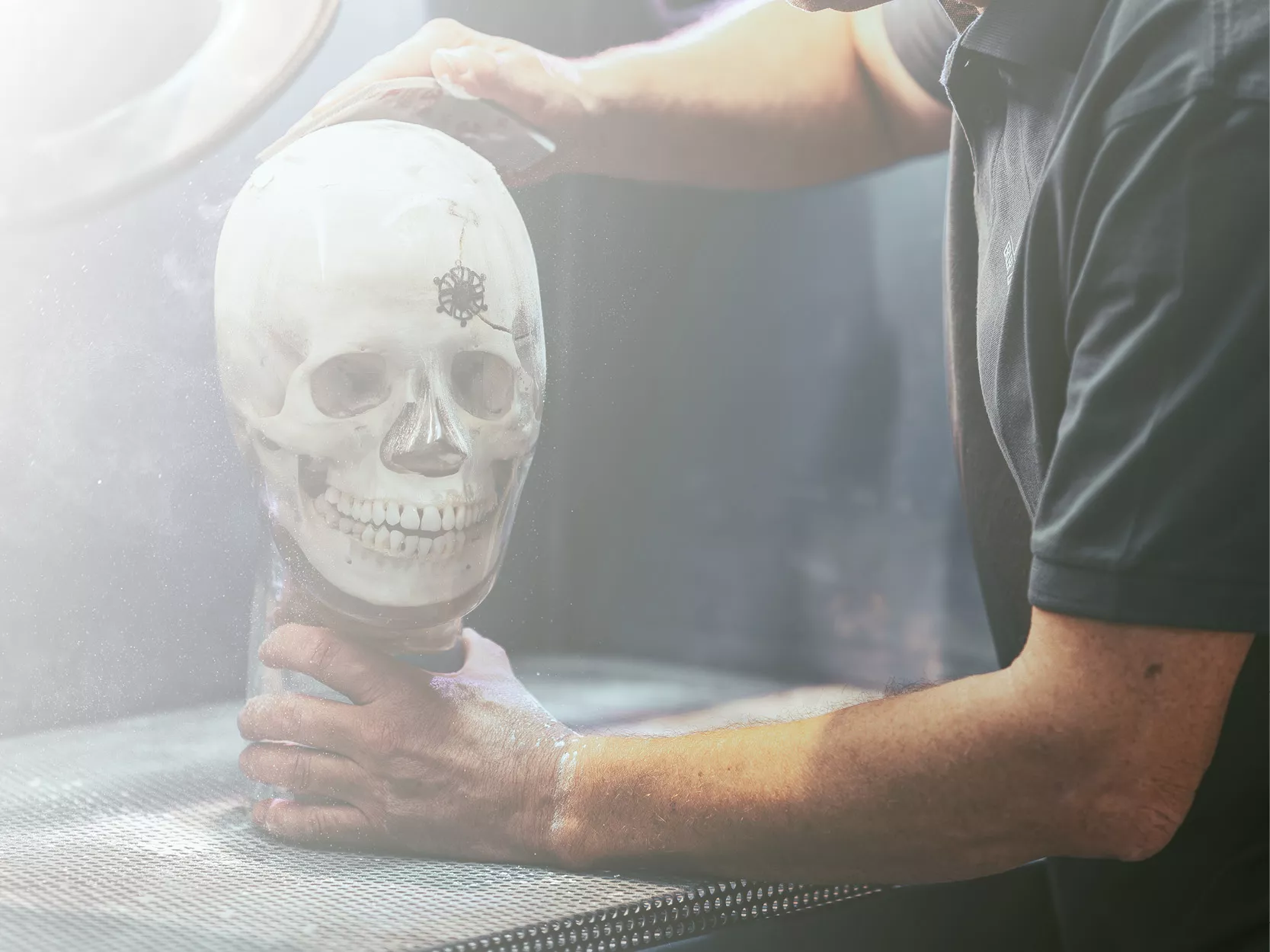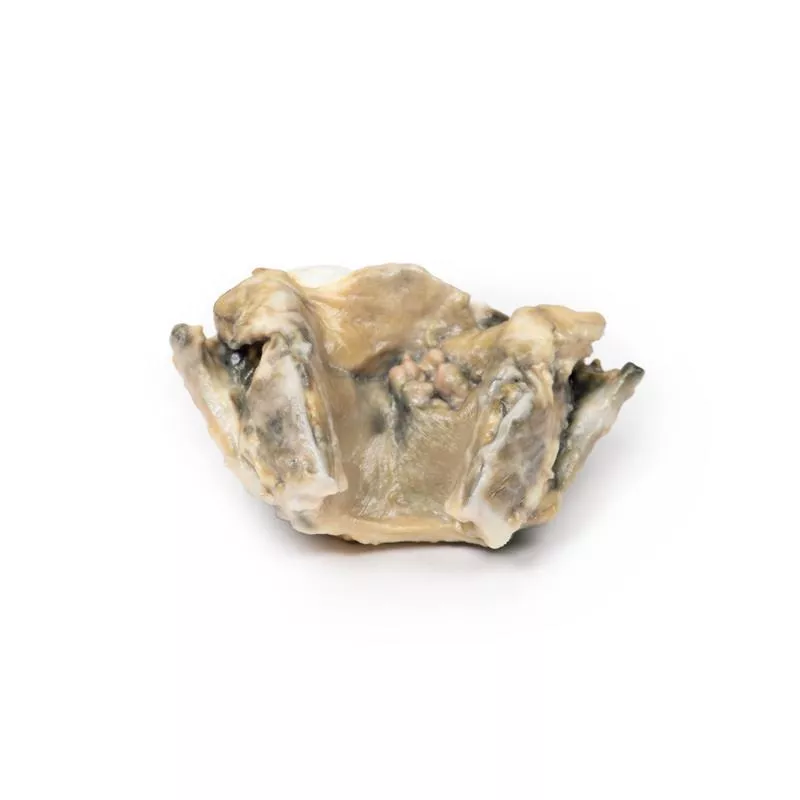Produktinformationen "Inhaled Foreign Body—trachea"
Klinische Vorgeschichte
Ein 57-jähriger Mann klagte über 3 Wochen Husten und pleuritische Schmerzen linksseitig. Das Röntgen zeigte Zusammenfall des linken Oberlappens mit großem pleuralem Erguss links. Bei der Pleurodese wurde eitrige Flüssigkeit entnommen. Trotz Drainage und Antibiotika verstarb er.
Pathologie
Die Probe zeigt die untere Luftröhre und Hauptbronchien mit aufgeschnittener linker Oberlappenbronchie. Dort war ein eingeklemmter Fremdkörper – eine eingeatmete Kaninchenwirbelsäule. Die Blockade führte zum Kollaps des Oberlappens, zur Pneumonie und fibrinösem Belag der Pleura. Es handelt sich um eine Fremdkörperaspiration mit Kollaps, Pneumonie und Empyem des linken Oberlappens.
Weitere Informationen
Fremdkörperaspiration (FBA) führt zur teilweisen oder vollständigen Verlegung der Atemwege und kann lebensbedrohlich sein, besonders bei Kindern unter 1 Jahr und Senioren über 75. Risikofaktoren bei Erwachsenen sind Bewusstseinsminderung, Intoxikation, Narkose, Medikamente, Schlaganfall und neurologische Erkrankungen wie Alzheimer oder Parkinson. Häufig aspirierte Gegenstände sind anorganische Objekte (Nägel, Stecknadeln) und organische Materialien (Knochen, unzureichend gekautes Fleisch). Symptome variieren von plötzlichem Erstickungsanfall bis zu chronischem Husten, Atemnot, Fieber, Brustschmerz und Hämoptysen. Ein distal entstandener Kollaps kann Infektionen auslösen. Die Behandlung erfolgt durch Bronchoskopie oder Not-Tracheotomie.
Ein 57-jähriger Mann klagte über 3 Wochen Husten und pleuritische Schmerzen linksseitig. Das Röntgen zeigte Zusammenfall des linken Oberlappens mit großem pleuralem Erguss links. Bei der Pleurodese wurde eitrige Flüssigkeit entnommen. Trotz Drainage und Antibiotika verstarb er.
Pathologie
Die Probe zeigt die untere Luftröhre und Hauptbronchien mit aufgeschnittener linker Oberlappenbronchie. Dort war ein eingeklemmter Fremdkörper – eine eingeatmete Kaninchenwirbelsäule. Die Blockade führte zum Kollaps des Oberlappens, zur Pneumonie und fibrinösem Belag der Pleura. Es handelt sich um eine Fremdkörperaspiration mit Kollaps, Pneumonie und Empyem des linken Oberlappens.
Weitere Informationen
Fremdkörperaspiration (FBA) führt zur teilweisen oder vollständigen Verlegung der Atemwege und kann lebensbedrohlich sein, besonders bei Kindern unter 1 Jahr und Senioren über 75. Risikofaktoren bei Erwachsenen sind Bewusstseinsminderung, Intoxikation, Narkose, Medikamente, Schlaganfall und neurologische Erkrankungen wie Alzheimer oder Parkinson. Häufig aspirierte Gegenstände sind anorganische Objekte (Nägel, Stecknadeln) und organische Materialien (Knochen, unzureichend gekautes Fleisch). Symptome variieren von plötzlichem Erstickungsanfall bis zu chronischem Husten, Atemnot, Fieber, Brustschmerz und Hämoptysen. Ein distal entstandener Kollaps kann Infektionen auslösen. Die Behandlung erfolgt durch Bronchoskopie oder Not-Tracheotomie.
Erler-Zimmer
Erler-Zimmer GmbH & Co.KG
Hauptstrasse 27
77886 Lauf
Germany
info@erler-zimmer.de
Achtung! Medizinisches Ausbildungsmaterial, kein Spielzeug. Nicht geeignet für Personen unter 14 Jahren.
Attention! Medical training material, not a toy. Not suitable for persons under 14 years of age.






































